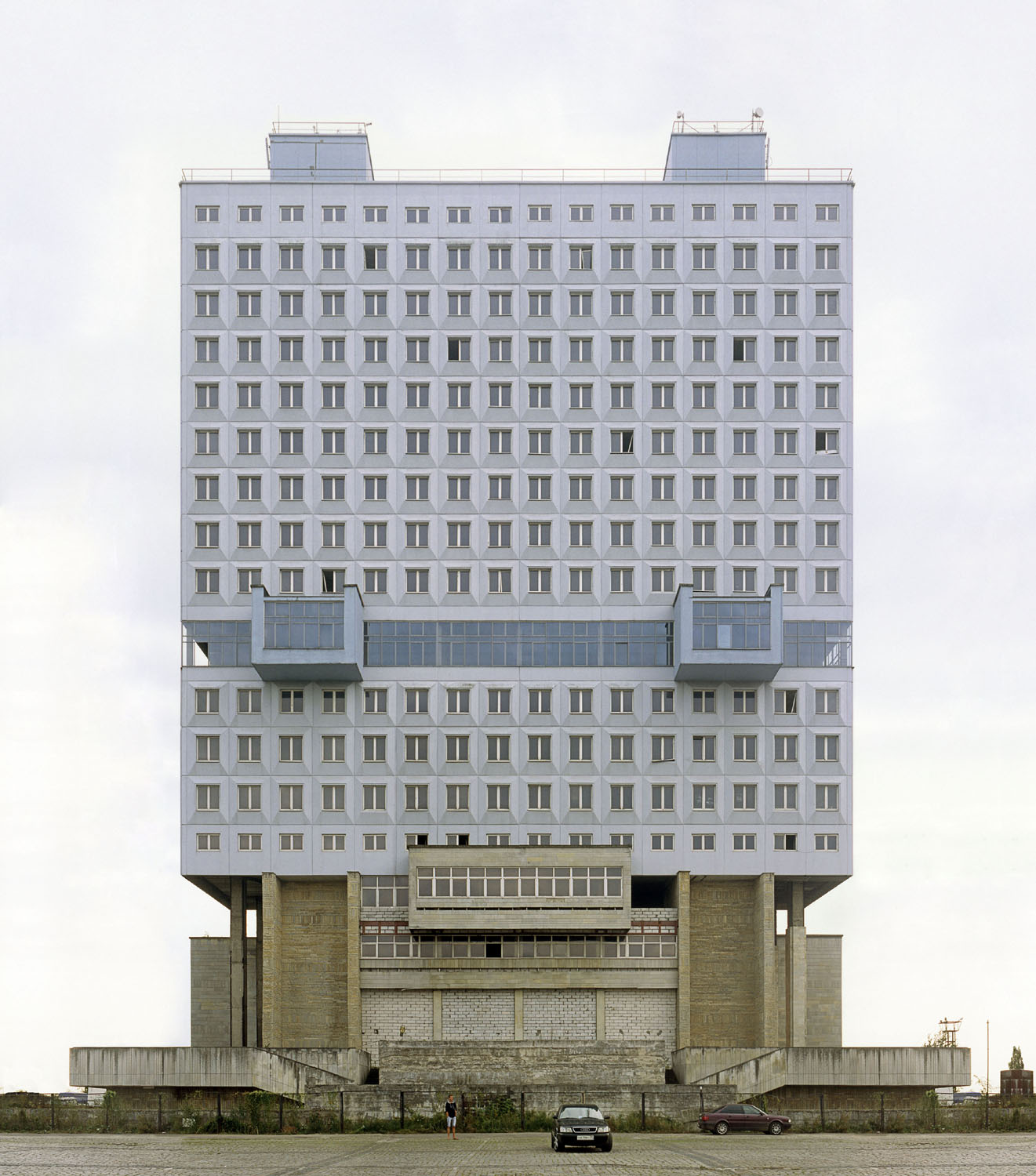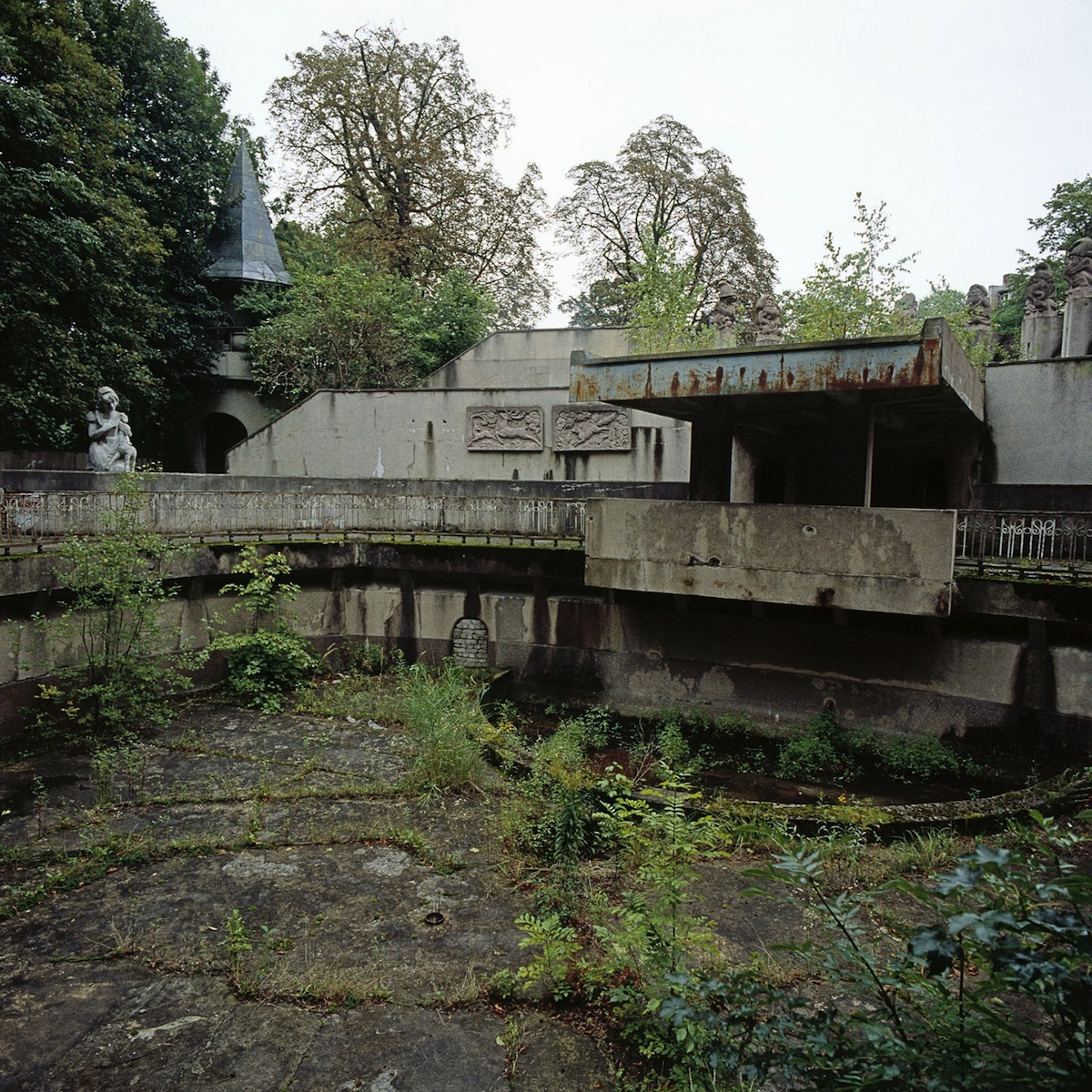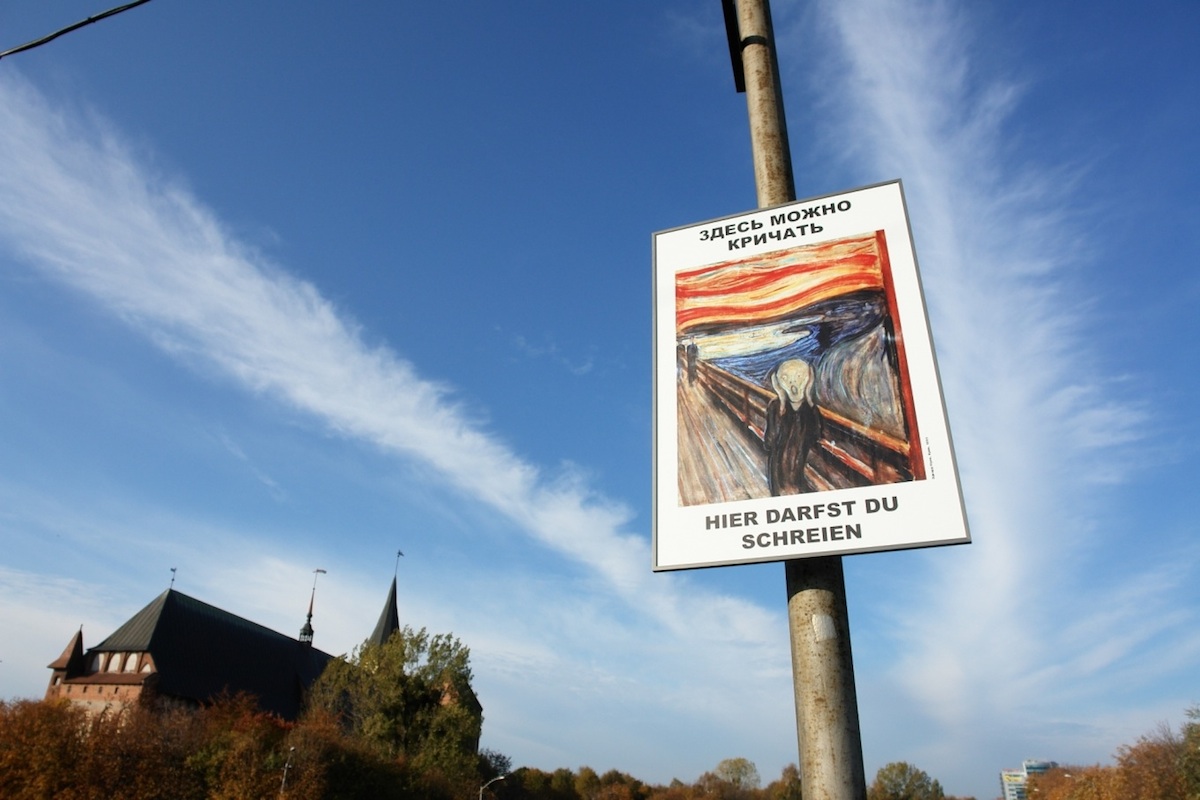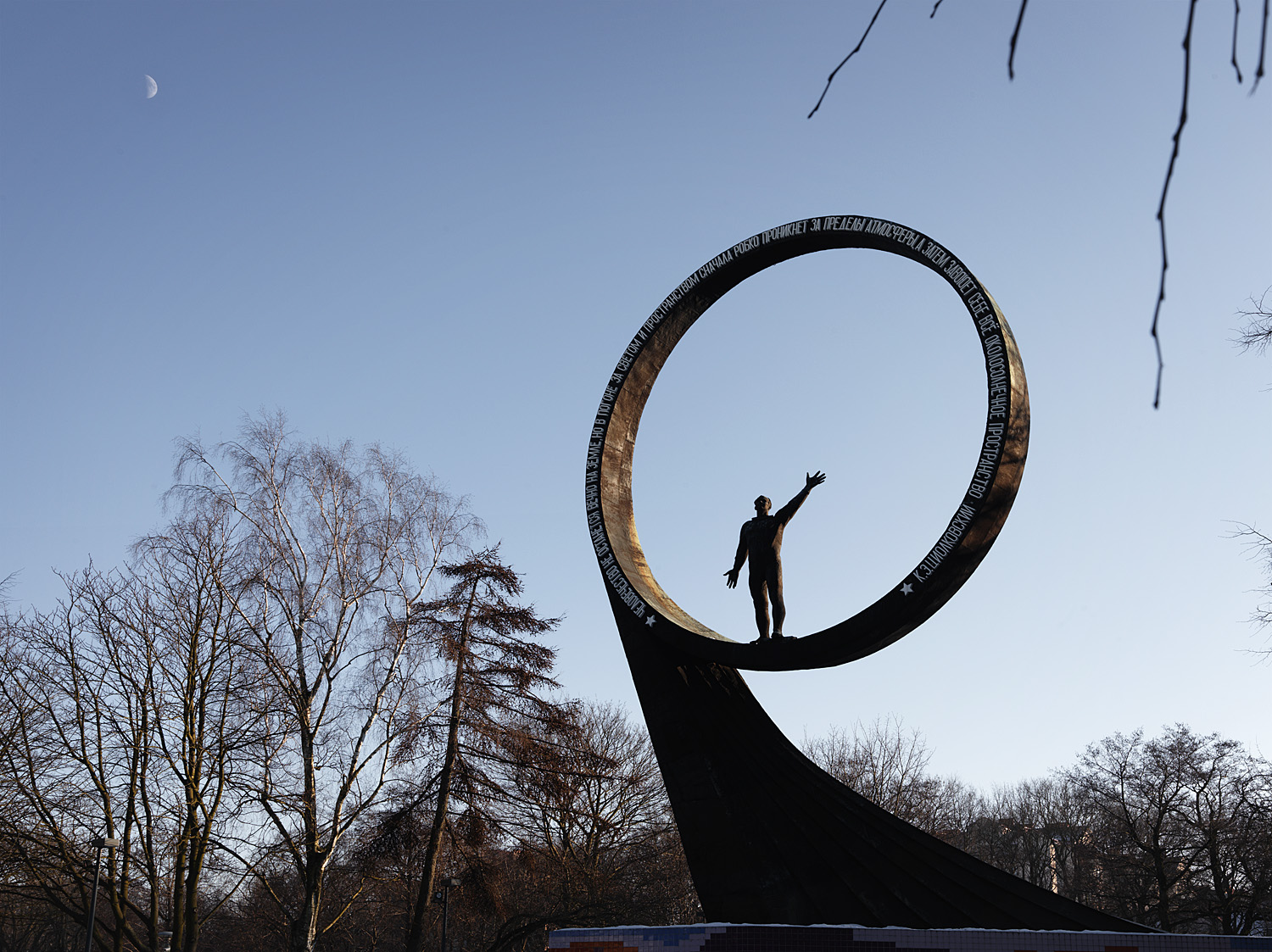Under western eyes: Polish artists tackle the paradox of Kaliningrad

Kaliningrad, Russia's Baltic exclave, sits right on the border with Poland. Agata Pyzik reflects on how historical antagonisms are informing Polish artists' vision of the city
Situated 450 kilometres from the Russian mainland, Kaliningrad is an isolated territory created by the Soviet Union. Bordered by southern Lithuania and eastern Poland it sits on the edge of the Baltic Sea, geographically separated from Russia but officially still part of the country, a hangover from a bygone era of empire. With its neighbours now part of the EU and NATO, as well as the Schengen zone, the city’s detachment from Russia is only growing.
Kaliningrad’s extraordinary position in Europe has inspired strong responses in adjoining countries, and particularly in Poland, not only from politicians, but also from artists. In January 2012 a simultaneous exhibition, Enclave, was held at Warsaw’s Centre for Contemporary Art and Kaliningrad’s National Centre for Contemporary Art. Artists from Poland and Russia were asked to reflect on the idea of an enclave, with regard to Kaliningrad itself.
What are the principal associations of the word “enclave”? Mostly negative: isolation, xenophobia, alienation. Judging from many contributions to the exhibition, Kaliningrad is a reflection of exactly that condition, a museum of dead ideology, surrounded by the ruins of an old system. Yet look closer and the city tells a different story. Both economically (it was given Special Economic Zone status in 1996) and demographically, Kaliningrad is doing significantly better than most of the rest of Russia. So which of those two images — cultural obsolescence or economic progress — is nearer to the truth?
 Zoo II (2011), Nicolas Grospierre
Zoo II (2011), Nicolas Grospierre
The Russian artists in the exhibition tended to respond more closely to the stated topic. Sound artist Danil Akimov produced the most ethereal work, a small room that became the city itself: a map was projected on the floor that was sensitive to footsteps and evoked the sounds of the respective parts of Kaliningrad. Art group Gentle Women (Nezhnye Baby) showed a video, Dirt, in which two women perform a strange ritual drowned in mud, telling a sad story of the women of the Curonian Spit, the enormous sandy peninsula which sweeps out from Kaliningrad towards Lithuania and forms an isolated enclave within an enclave.
Some of the Polish works meditated on neighbourliness and hospitality, kindness and the lack thereof. Karolina Breguła’s Good Neighbours, for instance, showed the artist walking around Kaliningrad knocking on people’s doors and introducing herself as “your nice neighbour from Warsaw”. For the most part, however, the Polish works in Enclave were what can be described as “Ostalgic” — wistful portrayals of Kaliningrad that focus on the ruins of the previous system, and in particular on the most devastated elements of post-Soviet reality. Franco-Polish photographer Nicolas Grospierre focused on picturesque Soviet relics: the Palace of Soviets (constructed on the site of a castle built by the Teutonic Knights); decaying tower blocks; government buildings and courtyards; and, as an epilogue, a library in an abandoned school, replete with endless heaps of ruined books.
Maciej Stepiński’s Exclave series contemplated wistful trash: one of the most typical features of Kaliningrad seems to be abandoned rusty cars. As always, the problem with aestheticising socialism like this is that it not only annihilates any potential positive uses of this project, declaring it as dead, but also provokes a melancholy longing for it.
Other works not only took a maudlin look at the city, but also criticised it. In a film by Polish group ZOR the narrator, increasingly unimpressed by the concrete architecture of the city, says, “It’s a terrible city. The ugliest city in the world!”
Ryszard Górecki’s You Can Scream Here is a sign, hung on the Timber Bridge in Kaliningrad, which reproduces Edvard Munch’s famous image with the invitation, in German and in Russian, to replicate that scream. Why would anyone want to scream there? “There could be many reasons,” says the artist. “Germans can scream from grief for the city they lost. Russians — while looking at the city they have built. And tourists — from the disappointment of Kaliningrad.” Little wonder that the sign was removed by vandals after only a week.
 You Can Scream Here (2011), Ryszard Górecki
You Can Scream Here (2011), Ryszard Górecki
Enclave was only one of several major shows on Russian art in Poland in the last ten years. It’s as if enough time has passed now that Poles and Russians are no longer afraid of each other. But that trauma clearly remains strong. Many of these exhibitions still manifest signs of fear and distrust. The banner made for one Russian-Polish show by artist Anna Witkowska read, “BEWARE, ENEMY!”
One might ask whether art is the right tool for overcoming these differences. But it is, at the very least, a good barometer of cross-border emotion. If there’s a show about a mutual friendship, you can bet that there are deep-running discrepancies and inequalities. But in Enclave we also see Poles looking at their neighbours with a certain fascination that might just transform into closeness. If anything, this show was a reminder of colonial interdependencies. Poles, at least on the political right, like to see Poland as a besieged, poor, betrayed country where things suddenly got better, at least by comparison. Now at last there’s someone worse off than them.
Shows like Enclave say more about Poles than the place they visited. One fascinating element of the transition after 1989 was the way in which the post-colonial process of “othering” had an effect on the modernising countries of Europe. Kaliningrad easily becomes a mystified “other” for the Poles. Many of the Polish artists who visit Kaliningrad speak of the “genius loci”, the specificity of the place, but fail to see it through anything other than Soviet cliches. The default reaction of the Polish artist is a traumatic image of the Communist past — and somehow we don’t want that image to be challenged. We like to think of Kaliningrad only as a prison or concentration camp, even though this is not what the citizens themselves see.
In the past the norm was from someone to come from the west to Poland, see the Stalinist architecture and say, “Look at these horrible Communist ruins!” Now it’s Poles themselves doing that. We have, it seems, done our homework on becoming a “normal European country” and now we’re telling our neighbours the news. What will come next? Will there be new quasi-colonial relations in capitalist Europe? East Prussia, which became Kaliningrad, was first an object of desire for the Teutonic Knights, and then became a staging post in the Red Army’s push to the west. It is, in its way, a tragic model of permanently colonised space.

